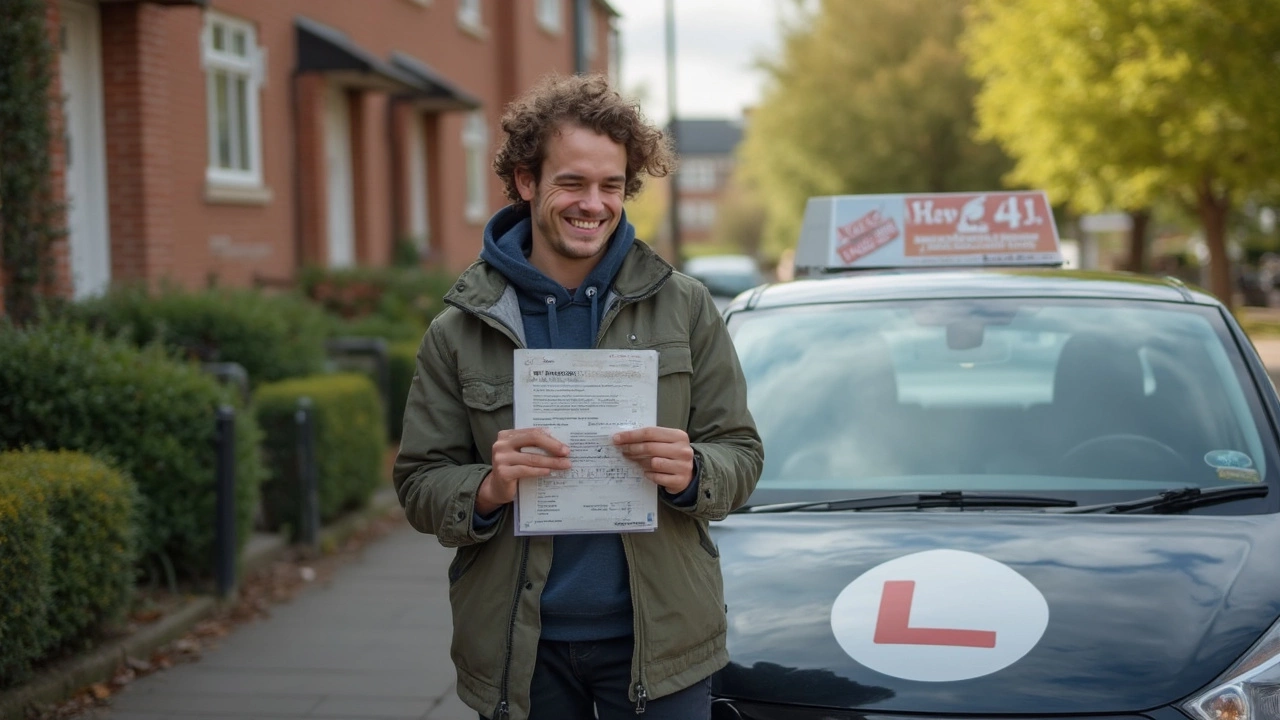It’s pretty common to finish an intensive driving course and stare at your results, wondering if you did enough. If you got a 79, you might be stressing about whether you squeaked by—or totally blew it. Short answer: it depends on what “passing” means where you took your test. Not all schools or exam centers grade the same way, and that can be seriously confusing if you’re not ready for it.
Instead of just hoping for the best, you need to get clear on how their scoring works. In most UK-based courses, for example, you don’t usually get scores like ‘79 out of 100.’ You either collect driver faults (minors or majors), or the examiner tells you straight out if you passed or failed. But some courses—especially private or intensive ones—use a percentage score. This catches a lot of people off guard because there’s not a single ‘official’ passing mark everywhere.
If you’re enrolled in a school that gives you a numerical grade, 79 can honestly swing both ways. Some places set the pass mark at 70, so 79 means you’re in the clear. Others want at least 80. The key is to check your test materials or simply ask your instructor for their standard. Don’t be shy about it—lots of students get tripped up because they assume the minimum is the same as their mate’s course.
- How Driving Course Scores Are Set
- Is 79 a Pass or Fail?
- What Actually Matters During the Test
- Real-World Tips to Boost Your Score
How Driving Course Scores Are Set
The way your driving score gets calculated isn’t always as obvious as it should be. In a standard UK driving test, you’ll get marked for faults and serious mistakes, not a percentage. But when you book an intensive driving course—especially with a private instructor or training company—they sometimes use a points or percentage-based system to make the results clearer.
Here’s what actually happens: instructors usually break down your test into categories like vehicle control, observation, road position, use of mirrors, decision making, and following traffic signs. For every action you take—good or bad—you’re either adding points or getting docked. Some schools score out of 100, others out of a different total, and some just use a "pass/fail" system.
For example, let’s say you’re with a driving school that scores out of 100 points. You might get marks like this:
| Test Category | Possible Points | Your Points |
|---|---|---|
| Observation | 20 | 15 |
| Vehicle Control | 25 | 20 |
| Road Position | 15 | 12 |
| Decision Making | 20 | 18 |
| Following Traffic Signs | 20 | 14 |
| Total | 100 | 79 |
The pass mark your school uses is key. Some set it at 80 out of 100. Others accept 70, especially if they think practical and safe driving is more important than a perfect score. You could score way higher in some categories and scrape by in others—what matters is the overall total.
If you’ve got doubts about your school’s system, ask for a breakdown ahead of time. That way, you know exactly what skills to work on and what sections could trip you up. This is way better than guessing on test day.
Is 79 a Pass or Fail?
Alright, here’s what lots of people get wrong about a driving score: there’s no single rule that says 79 is a pass or fail everywhere. The line changes depending on your driving school, local licensing center, or even the intensity of your course. Some places see 79 as a safe win, others will have you rebooking your test. Before you panic or celebrate, find out the pass mark for your specific test.
Here’s a quick look at how pass marks can vary with real-world examples:
| Course Provider | Pass Mark (%) | Fail if Below |
|---|---|---|
| UK National Practical Test* | Not scored numerically | Marked by minor and major faults |
| Private Intensive Course A | 80 | 79 or lower |
| Private Intensive Course B | 70 | 69 or lower |
| Driving Theory Test (UK) | 86 (out of 100) | 85 or lower |
*In the official UK driving exam, you don’t actually get a number. You pass if you have fewer than 16 minor faults and zero serious faults. That’s a totally different system compared to some of the private or intensive providers.
So what should you do if you’ve just got a 79? Don’t assume you’ve failed or passed—go straight to your school’s manual or exam sheet. Here’s a quick checklist to get it sorted:
- Check your course materials for the minimum passing score.
- If it’s not clear, email or call your instructor. No shame—schools get these questions all the time.
- Look for language like "pass mark is 80%" or "minimum score required is 70%." That's your answer.
Bottom line? 79 can go either way. Double-check right away so you don’t waste time worrying or, worse, show up thinking you’ve nailed it when you haven’t met the mark yet.

What Actually Matters During the Test
When you’re behind the wheel for your test, the examiner isn’t looking for perfection. They want to know if you can drive safely in real-world conditions. Most people worry about small slip-ups, but unless you make a big mistake (called a "serious" or "dangerous" fault), you can still pass—even with a few minor errors on your record.
So, what counts? Here's what most examiners pay attention to:
- Driving score: A lot of private or intensive courses use a percentage, but the real focus is on your control, awareness, and decision-making.
- Observation and mirrors: Not just looking around, but showing you notice what's happening around you—checking your mirrors before turning or changing lanes.
- Control of the vehicle: Smooth gear changes, steady steering, and confident braking matter more than tiny mistakes like a slightly missed junction.
- Following procedures: Using signals, stopping at the right place, and sticking to the speed limit are basics. Cutting corners or forgetting key steps can get you marked down hard.
- Handling pressure: Even if you get flustered, keeping your composure says a lot to your examiner.
Tiny errors—like misjudging a gear or stalling once—are rarely dealbreakers if you recover quickly. But something like missing a stop sign or pulling out when it’s not safe can mean instant failure.
If you’re curious how people generally do, here’s a quick look at some recent stats in the UK:
| Fault Type | What Counts | Notes |
|---|---|---|
| Minor faults | Up to 15 allowed | Small mistakes, but no hazard caused |
| Major (serious or dangerous) faults | 0 allowed | Any of these is a fail |
| Average UK pass rate (2024) | 48.2% | Almost half of all candidates pass |
The examiner really just wants to see you can drive on your own without putting yourself or others at risk. If you stick to the basics, don’t panic over the little things, and keep your attention sharp, you’ve already handled the most important parts of the test.
Real-World Tips to Boost Your Score
You don’t need to be a driving prodigy to notch a higher score, but you do need a game plan. There’s no huge secret: nailing the basics, staying cool, and handling a curveball or two will make all the difference. Here’s what actually helps:
- Know the Rules – Sounds obvious, but loads of people get tripped up by road signs and right-of-way. Spend half an hour a night on mock theory tests. The DVSA’s official app is the most reliable, and people who use it score up to 15% higher in their actual tests.
- Mirror-Signal-Manoeuvre (MSM) Routine – Examiners watch for this like hawks. Making it second nature can turn potential minors into clean moves, especially at junctions or when overtaking.
- Practice Under Pressure – Get a friend or family member to distract you with small talk or “random emergencies” (like a pretend ambulance behind) during practice drives. It’s awkward, but it helps you stay sharp when surprises hit during your real test.
- Mock Tests – Ask your instructor for at least two full mock tests before the real thing. They’re not just practice—they flag up weak spots you can fix before the pressure is on.
- Hazard Perception Drills – The hazard perception part often throws people, especially in intensive driving courses. Using online simulations, aim for spotting and reacting to hazards a second faster each session.
Here’s a quick look at how focusing on prep impacts pass rates:
| Prep Method | Average Pass Rate |
|---|---|
| No mock tests, basic revision | 54% |
| Frequent mock tests, daily practice | 73% |
If you’re stressed about getting 79 out of 100, remember: confidence comes from good habits more than luck. Use feedback from every lesson, keep your cool on exam day, and make the MSM routine automatic. If you can stay relaxed and alert behind the wheel, that driving score will take care of itself.

